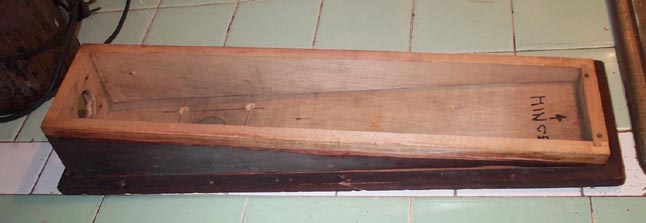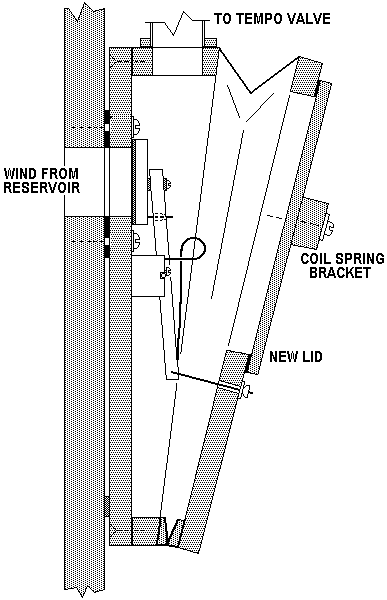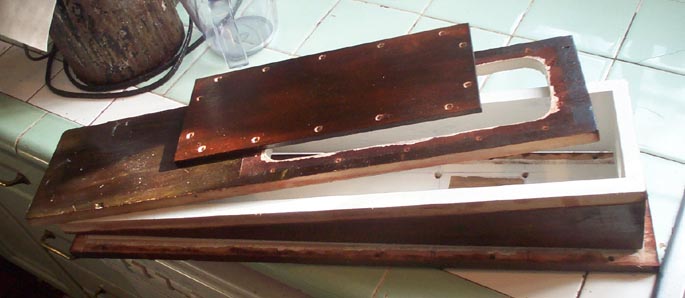
Chapter 8.1 - The Tempo Regulator, Introduction
Unlike most Aeolian pianos and pipe organs, which used knife regulators, the tempo regulator is a pallet and hole type, like an Ampico or Guilbransen in reverse. As the pressure in the bellows reaches the setpoint established by the spring, the pallet valve closes off the supply. The regulator I got with the organ was from another instrument (mine had the player parts removed in the past). Snakebite marks on the lid showed that the original spring was a compass spring, but that spring and its fixed end support bracket was lost. This regulator was attached to the reservoir by many screws through a flange around all four sides. Access to the interior was by means of removing the whole thing, and opening the flanged board on the inner side.

On my organ, the regulator was meant to be attached by four big screws surrounding the supply hole. To gain access to these screws, there has to be a removable cover on the lid. So I modified the box by making an opening in the lid and making a gasketed cover. The flanges on the back board were sawn off, and the back board was permanently attached to the box with a glued, blotting paper gasket. A bracket for attaching coil springs (easier to adjust) was fabricated.

This picture shows the box, the cut down bottom board, the lid and the new cover, ready for covering. This regulator was made from sugar pine, which looked porous from ten feet away. I coated all the interior surfaces with Zinsser B-I-N impermeable primer, a mixture of shellac and pigment (TiO2 and SiO2). This is just like the white stuff that Aeolian used to seal channels and pouch wells in Orchestrelles, except that the old pigment must have been zinc white or lead white back then. This is really excellent stuff. The white layer shows that the pigment bridged all the gaps in the wood, even the end grain cuts; much better than plain shellac which soaks in and may require several coats. Subsequent test proved that the box was leak tight. The Aeolian Compant occasionally had some good ideas. Read all about Zinsser B-I-N here.
